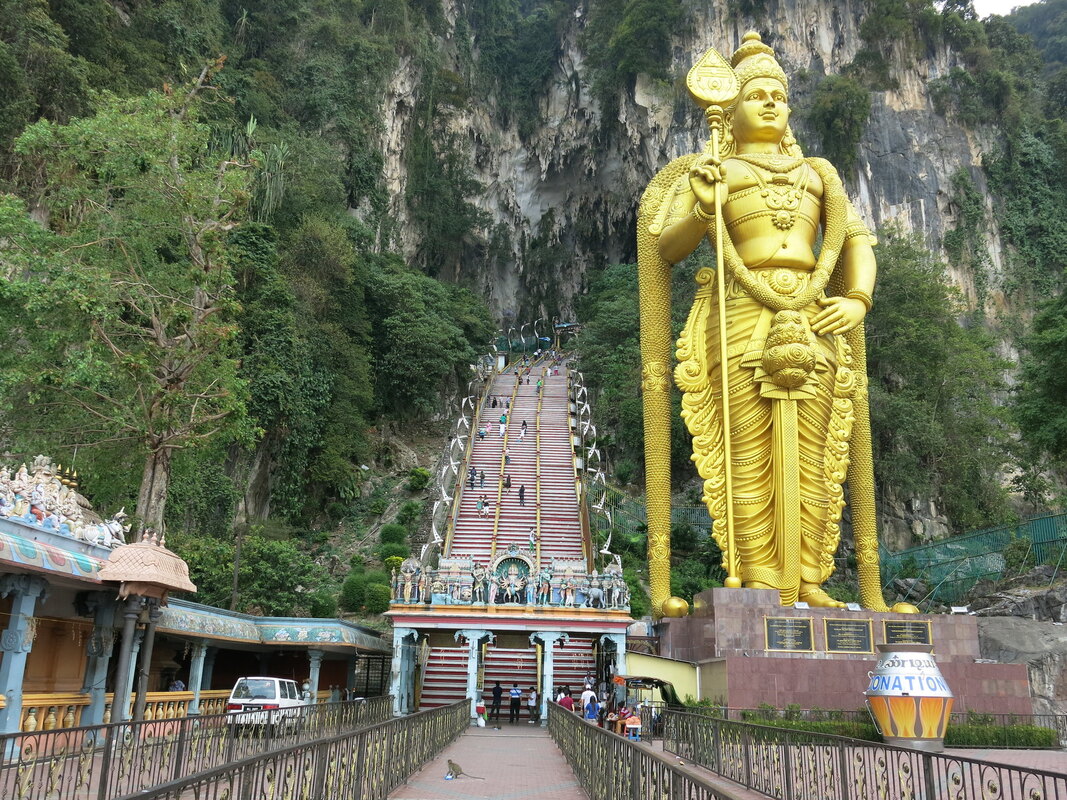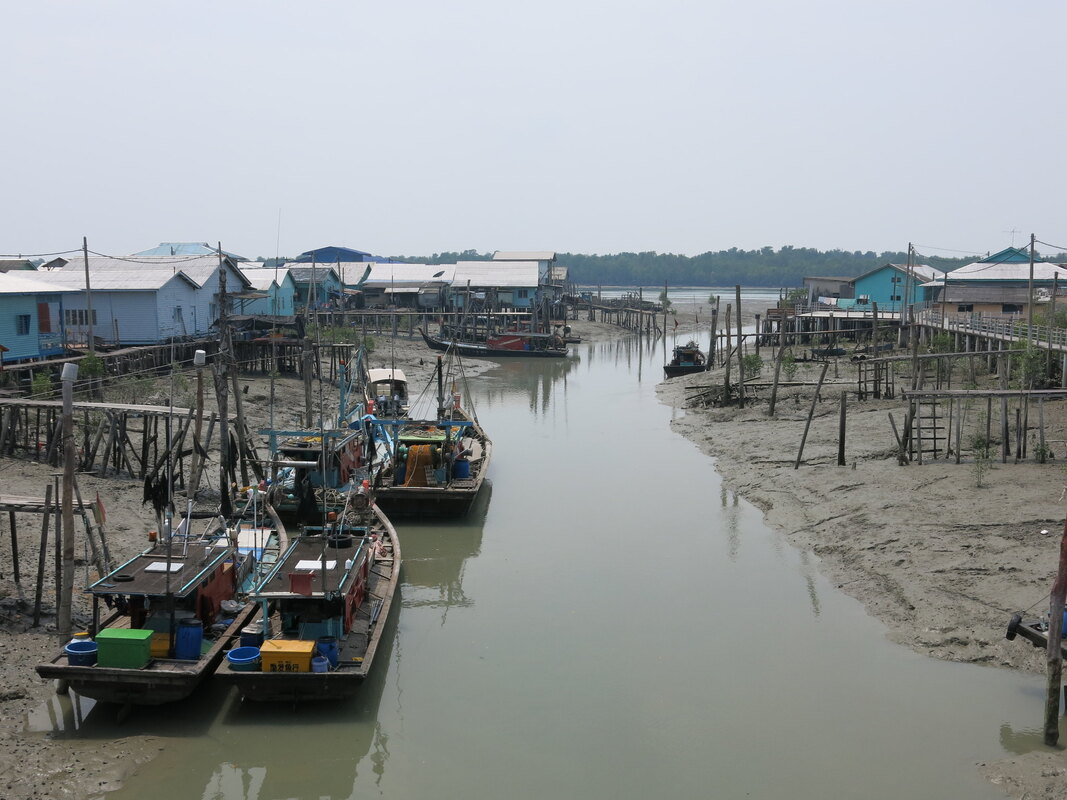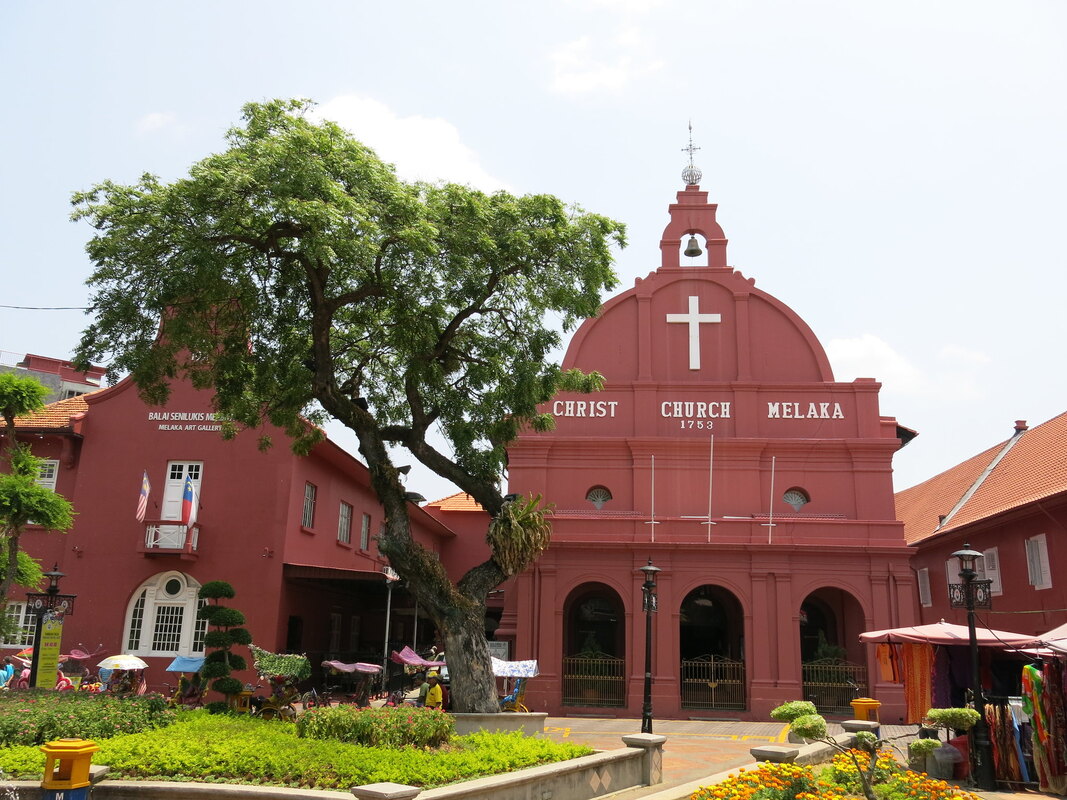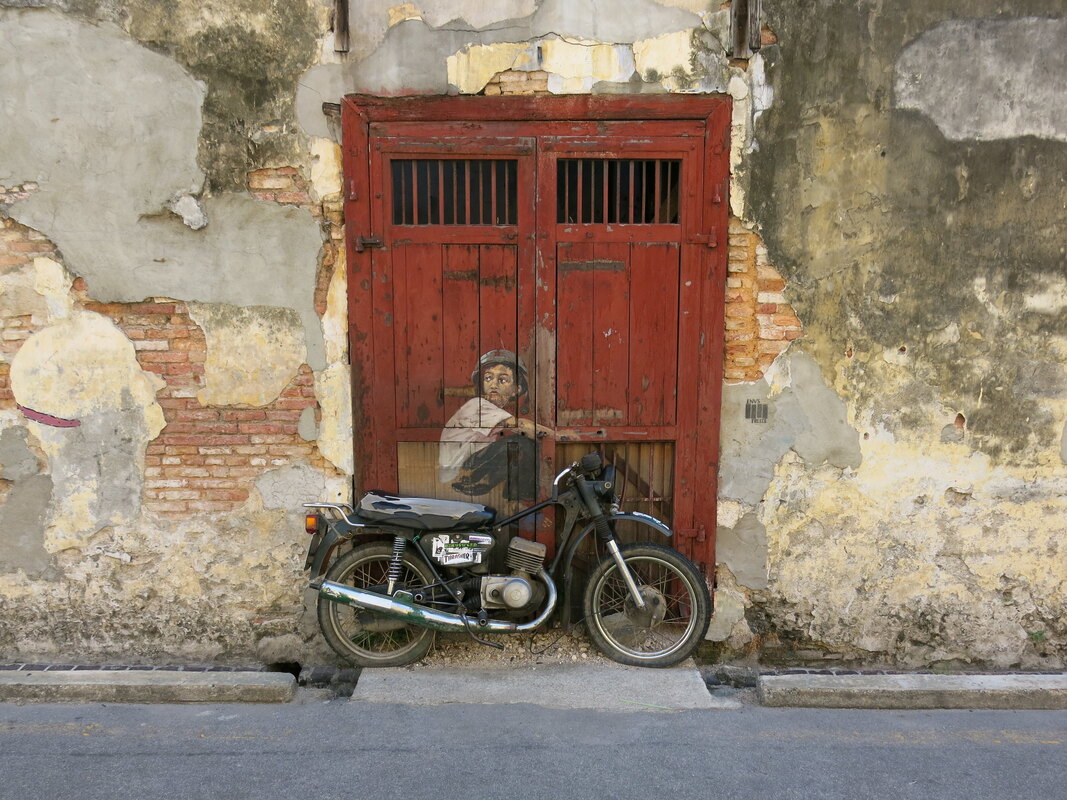MALAYSIA
Malaysia's a complex country: there's two parts - Peninsular and Borneo. It's part first world with modern infrastructure and an expanding economy; part third world in other, poorer areas. It's part free-market, part heavy state involvement. It's a democratic constitutional monarchy although a dominant single party, the United Malays National Organisation has controlled the prime minister position since independence. There's the Kuala Lumpur's glitz contrasting the conservative Muslim communities in the northeast peninsula and Borneo. Of the 28.3m citizens only 50% are ethnically Malay. British Colonialism saw an influx of Chinese and Indians who comprise 24% and 7% of the population, respectively. These two cultures have very strong culinary and economic presence but little political power.
MALAYSIA DESTINATIONS
Each of Malaysia's sections are distinct and from a travel perspective could be considered visiting two separate countries - they were joined in 1963 following a debated UN referendum; essentially the two parts do not share a common cultural heritage other than being part of the same British Colonial territory.
Peninsular Malaysia is more cosmopolitan oriented (Kuala Lumpur, Penang, Malacca) while Borneo is more about natural escape (Jungles, Scuba Diving, and Mt. Kota Kinabula) although this is a fairly general characterization. In a one-week vacation it’d be difficult to cover both areas so it’s important to know where you want to focus.
Malaysia is also the headquarters of Air Asia - one of Asia’s premier low cost travel airlines - which makes Kuala Lumpur an excellent place to use as a base to reach other destinations with a lower airfare.
Peninsular Malaysia is more cosmopolitan oriented (Kuala Lumpur, Penang, Malacca) while Borneo is more about natural escape (Jungles, Scuba Diving, and Mt. Kota Kinabula) although this is a fairly general characterization. In a one-week vacation it’d be difficult to cover both areas so it’s important to know where you want to focus.
Malaysia is also the headquarters of Air Asia - one of Asia’s premier low cost travel airlines - which makes Kuala Lumpur an excellent place to use as a base to reach other destinations with a lower airfare.
COUNTRY BACKGROUND
HISTORY
300s -1500s: Srivijaya Empire; the Empire's collapse created various city states with Arab, Malay, and Javan influences
1500s - 1800s: Colonial rule passed from the Portuguese to the Dutch to the British
Post WWII: The British returned without the intention of granting independence but ultimately left in 1963 due to strong nationalism
Post Independence: Mahathir Mohamed (PM for 1981 - 2003) receives most of the credit for developing the economy, infrastructure, and modern-day Malaysia
GOVERNMENT
Westminster System - bicameral legislature (popular vote)
King (ceremonial - elected by hereditary rulers) selects PM from majority party (or coalition) in House of Representatives
Legislature: House of Representatives - direct election; Senate - 44 of 70 Members appointed by King at PM’s Discretion
Federal Court - English Common Law - lack of independence common criticism
ECONOMY
State Oriented (Energy, Media, Telco) Free Market
New Economic Policy - advance Bumiputera (Malays and Indigenous) over Chinese, Indians, and others
EDUCATION
Compulsory -> 6 years primary, 5 years secondary
Strong standardized testing
Language issues but now Malay, Chinese, and Tamil spoken in schools
HEALTHCARE
Two tier: Government run universal healthcare and private
Doctors compulsory three years in universal healthcare
Private hospitals in urban areas with better facilities, newer equipment
300s -1500s: Srivijaya Empire; the Empire's collapse created various city states with Arab, Malay, and Javan influences
1500s - 1800s: Colonial rule passed from the Portuguese to the Dutch to the British
Post WWII: The British returned without the intention of granting independence but ultimately left in 1963 due to strong nationalism
Post Independence: Mahathir Mohamed (PM for 1981 - 2003) receives most of the credit for developing the economy, infrastructure, and modern-day Malaysia
GOVERNMENT
Westminster System - bicameral legislature (popular vote)
King (ceremonial - elected by hereditary rulers) selects PM from majority party (or coalition) in House of Representatives
Legislature: House of Representatives - direct election; Senate - 44 of 70 Members appointed by King at PM’s Discretion
Federal Court - English Common Law - lack of independence common criticism
ECONOMY
State Oriented (Energy, Media, Telco) Free Market
New Economic Policy - advance Bumiputera (Malays and Indigenous) over Chinese, Indians, and others
EDUCATION
Compulsory -> 6 years primary, 5 years secondary
Strong standardized testing
Language issues but now Malay, Chinese, and Tamil spoken in schools
HEALTHCARE
Two tier: Government run universal healthcare and private
Doctors compulsory three years in universal healthcare
Private hospitals in urban areas with better facilities, newer equipment
TRAVEL INFORMATION
HOTEL ACCOMMODATIONS
Malaysia offers a little bit of everything and with a well developed infrastructure in place makes it easy to go wherever you want.
IN COUNTRY TRAVEL
Peninsular Malaysia has terrific infrastructure which makes it easy to move around via bus, train, metro, ferry, and plane. Smooth roads mean that buses typically depart and arrive on schedule.
- Cheap (less than $15) and well located hostels. Most hostels are within walking distance of major sites and entertainment areas. Kuala Lumpur also has an extensive metro network making it easy to travel within the city.
- Sunshine Bedz Hostel in Kuala Lumpur - located right by the Bukit Bintang metro stop. Less than a 5 minute walk to the Pavilion Shopping area and from there you can take a covered walkway all the way to the Petronas Towers.
- Kota Kinabalu has more limited and lower quality options; Penang has several hostels in converted pre WWII buildings that feel like hipster, boutique hotels
- Hawker Centers and Food Courts
- Kuala Lumpur Hawker Centers are closer to outdoor restaurants than the enclosed centers in Singapore and Penang - as such the prices are a little higher too - the KL food courts in malls offer a wide range of options for prices similar to the Singapore and Penang hawker centers
- Meals < $5, but Beer > $5...because it's a Muslim country
- Penang is considered a food paradise ala Singapore, but doesn’t have the same quantity of hawker centers
Malaysia offers a little bit of everything and with a well developed infrastructure in place makes it easy to go wherever you want.
- Kuala Lumpur: Batu Caves, Petronas Towers, Malls, and Food
- As noted in the intro, Kuala Lumpur is also a great base city for discount travel throughout SE Asia; it’s easy to obtain a Myanmar visa as well - same day or one day turnaround through an agency
- Kuala Lumpur also is a great base city for seeing other parts of Malaysia - Malacca is only a two hour bus ride away and given how little there is in Malacca you may not want to spend the night
- Borneo: Climbing Mt. Kota Kinabalu requires a "guide"
- Penang (Georgetown): preserved old town with well defined walking routes which highlight the historic buildings and street art
IN COUNTRY TRAVEL
Peninsular Malaysia has terrific infrastructure which makes it easy to move around via bus, train, metro, ferry, and plane. Smooth roads mean that buses typically depart and arrive on schedule.
- Buses are cheap: 18RM to Malacca (2 hours), 35RM to Penang (4 hours)
- In KL, buses heading North leave from Pudu Raya, buses heading South leave from a station connected to the Bandar Tasik Selatan metro line
- Trains are cheap: 35RM to Penang (6 hours - more stops than the bus)
- Planes are cheap: 100RM KL to Penang, but baggage extra
- Taxis are relatively cheap: most of the time you’ll need to negotiate a fare even if the taxi has a meter - streets aren’t well labeled and somewhat confusing, that combined with the humidity and you won’t want to be walking long distances





